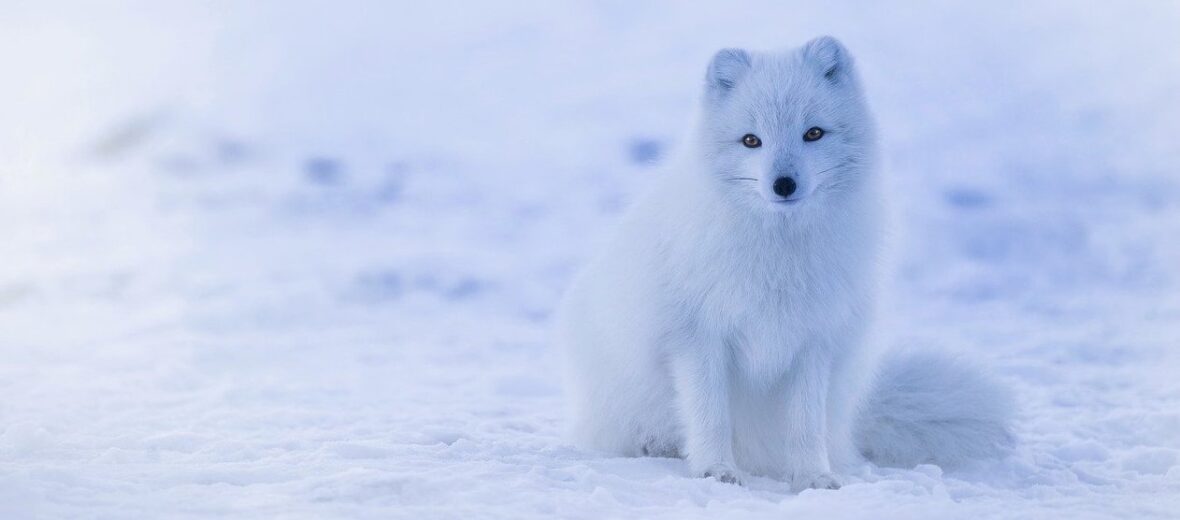
With the ability to survive in some of the harshest conditions on the planet, the Arctic fox is able to survive in temperatures that drop as low as -76˚F! Their jovial and playful nature, plus their stark white coat have made these critters a favorite of Arctic animals. Due to their fun attitude, they are also known as the clowns of the tundra. Even though they were once hunted for their beautiful fur coat, they have made a great comeback. Now Arctic foxes are listed as Least Concern by the IUCN.
First the Stats…
Scientific name: Vulpes lagopus
Weight: Up to 21 lbs.
Length: Up to 27 inches, plus up to a 12 inch tail
Height: Up to 12 inches, at the shoulder
Lifespan: Up to 14 years
Now on to the Facts!
1.) The Arctic fox has the warmest pelt of any Arctic mammal. This allows them to withstand temps as low as -76° F. If it gets too cold, their metabolism simply increases to warm them up.
2.) Their Latin name “Vulpes lagopus” means “hare-footed fox”. This is due to the fur they have on their paws, which helps reduce heat-loss and assists in walking on icy surfaces.
3.) The Arctic fox primarily preys on voles, hares, and their favorite… lemmings. They are omnivores (eat both plant and animal matter) though that are opportunistic feeders. They can hunt perfectly well, but often have no shame in eating the scraps left behind from a polar bear.
4.) Like other foxes, these cute critters have amazing hearing and also use the north facing electromagnetic poles to triangulate prey hidden in the snow.
5.) Polar bears and climate change are the biggest threats to these cute critters.
But wait, there’s more on the Arctic fox!
6.) Typically speaking, these foxes are nomadic and solitary. However, in the summer, they congregate into small family groups consisting of a male and 2 females, plus their kits. Only the alpha male and female will breed. The subordinate female (born from a previous litter) acts as a nanny to help raise the kits.
7.) The Arctic fox is the smallest wild canine located in Canada.
Did you know…?
They may be a snowy white in the winter, but their coat changes to a grayish brown in spring and summer.
8.) They live in burrows, with extensive tunnel systems. However, if no burrow is available, they will create a temporary hide by burrowing in the snow; like during a blizzard.
9.) These foxes are monogamous (mate for life).
10.) Females give birth to 6 – 14 kits up to 2 times a year.
Now a Short Arctic Fox Video!
Also, check out the Critter Science YouTube channel. Videos added frequently!
Want to suggest a critter for me to write about? Let me know here.



